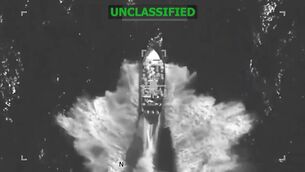3D laser imaging brings Victory back to high seas

Victory is the world’s oldest commissioned warship and was Nelson’s flag ship at the Battle of Trafalgar where the Royal Navy took on a combined French and Spanish fleet in 1805.
The 248-year-old vessel is currently undergoing conservation at her home in Portsmouth’s Historic Dockyard and the new technique is allowing experts to see more clearly how the ship was made and the complexity of the 18th century vessel.














